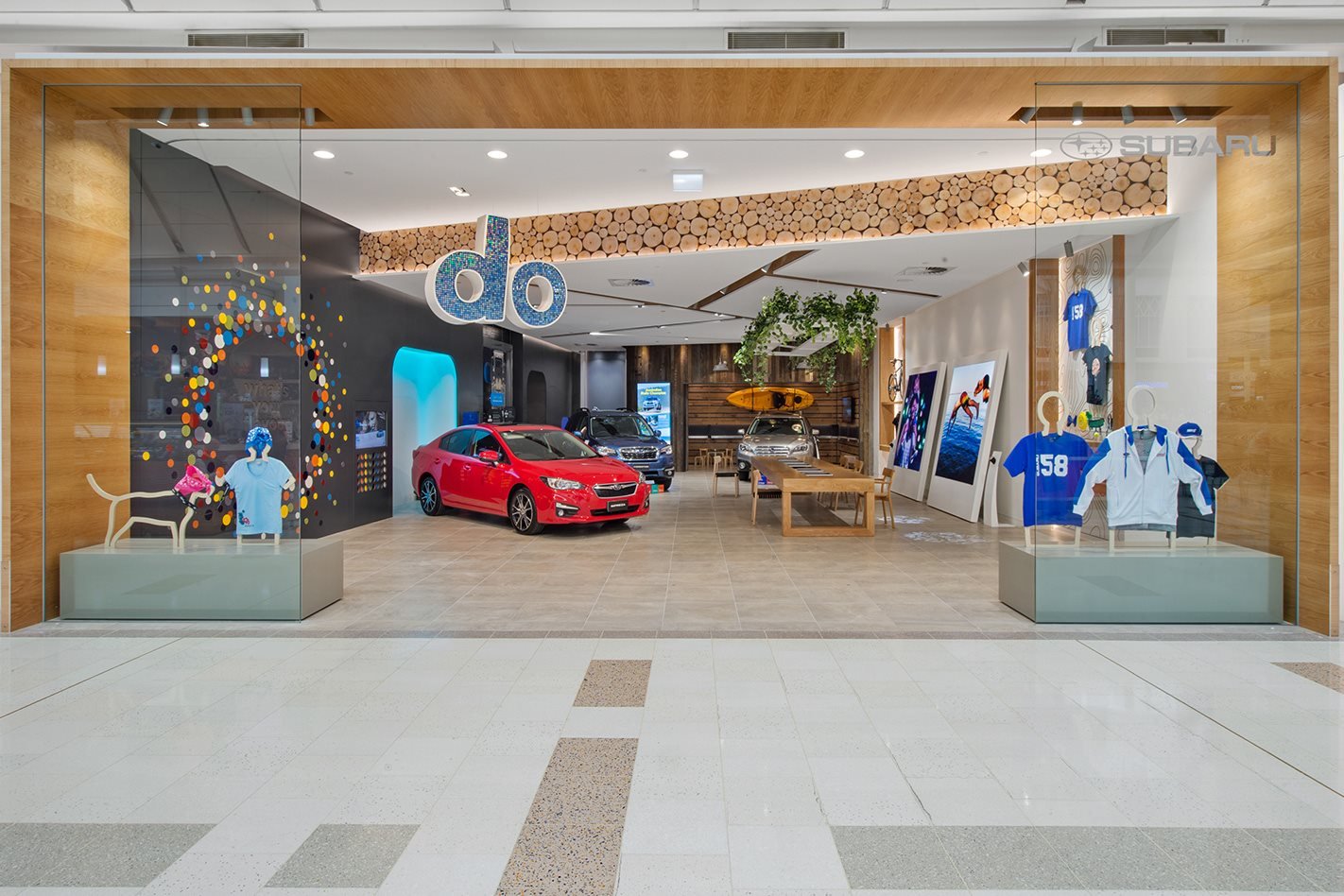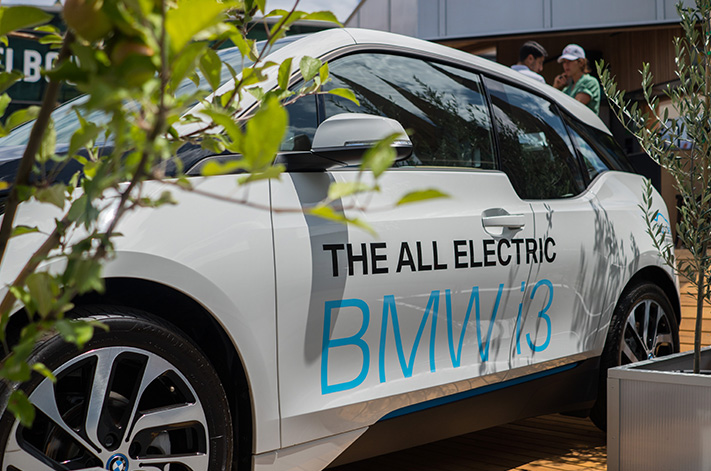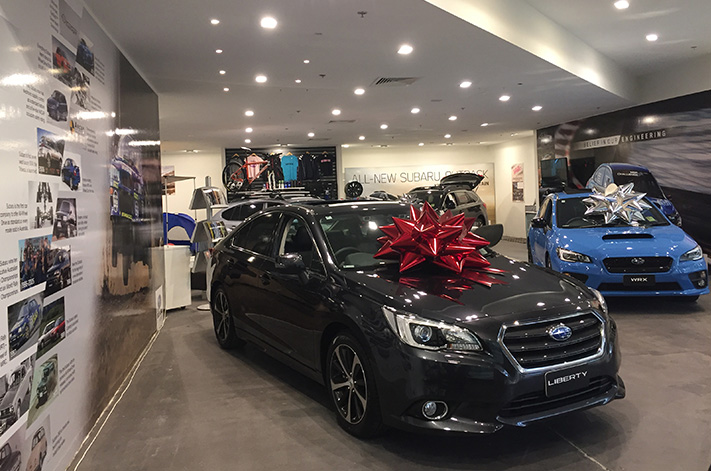
The internet changed the way we ‘kick tyres’ in new-car showrooms. But it’s also changing the way car companies want sell their products to you.
Wander around any major shopping centre, and you’ll come across displays from car makers as diverse as BMW, Subaru and Tesla. Ask for a test drive, and in some cases the car will come to you, sometimes for the weekend, as the brands try and best show how their model shines. And sometimes, you don’t even need to talk to a salesperson.

The most disruptive brand when it comes to cutting-edge technology also happens to be the most innovative in terms of how it sells its products. In the US, specialist electric car maker Tesla has tried to reinvent the new-car showroom, encouraging its customers to order and pay online, and only wander into an Apple-style storefront to pick up their new ride.
“The online process is complementary to the in-store process,” a Tesla spokesman told WhichCar.
“There is consistency with the use of the design studio, allowing for customers to come in-store and be educated by the Tesla team, undertake a test drive, however be able to make decisions pertaining to their design in the comfort of their home if they wish.
“They are then able to place the order online, or go through their configuration in-store. This also allows for customers in locations where we do not have stores to order our vehicles as we continue to grow.”
Shopping centres have also become a beacon for car makers, where potential buyers hunting around for the latest fashion for their wardrobe could also be seeking the same thing for their driveway.
Mini pioneered the concept of pop-up stores in Australia, launching short-stay shopfronts that blurred the line between shopping centre and showroom. It’s now quite common to see miniature showrooms in busy shopping centre walkways where passers-by can get up close with new cars and form that first emotional connection – one that could one day translate to a sale.

BMW isn’t even bothering with a car for its latest campaign to promote the i3. Instead, it is using virtual reality to get potential shopping centre-based customers up close with the most technology heavy model in its showroom. Passers-by can don a virtual reality headset to jump inside a BMW i3 made entirely out of pixels, and move around it using the same advanced graphics that once ran the styling studios of the world’s largest car companies.
It appears to be working; in its first few months, the augmented reality i3 had hosted 1000 people who had never experienced the brand before.
But it is not just about flogging cars inside the shopping centres. The car parks, too, have become a new playground for showcasing product.
BMW is at the forefront of this, too, sponsoring a number of heavily branded recharging points at Westfield shopping centres for its growing range of plug-in hybrid models, and the hybrid/electric “i” range that includes the i8 supercar and the i3 city runabout.
It hopes that as shoppers walk past, the exclusivity of the parking spaces – the recharging bays are located under cover and close to the shopping centre’s entrance – is enough to tip some buyers into thinking of investing in the plug-in tech when next they shop around for a new car.

Likewise, Subaru is pushing into the shopping centre as a showroom of the future. It has started with a similar pop-up store to BMW’s idea, but plans to grow those that show promise into a permanent storefront.
“We had the opportunity to trial these pop-up stores over the past year and are encouraged by their success,” Subaru Australia managing director Colin Christie said. “Driven by the positive customer response and number of sales – more than 500 vehicles sold since its introduction – we are committed to offer this new kind of Subaru buying experience in other markets.”
Subaru has also experimented heavily with selling cars online, pushing specialist models including the BRZ sports coupe and WRX/Sti sedans via the platform. It has worked well for Subaru’s niche models, but now it plans to expand it to more mainstream models, including the recently launched XV small SUV.
“The biggest thing for us is giving options to customers,” Christie said. “The buy online platform, certainly there are people taking it up and that’s across BRZ, STi and Impreza, and now with XV,” he said.

The part of the website driving the online sales, he said, was the online car configurator, which had attracted 100,000 people since its launch who were keen to build a customised Subaru.
Christie said Subaru was looking at rolling the concept out across other models in the line-up.
“If customers want to buy cars this way, then it’s all about allowing them, in the comfort of their own home, to build and design their own cars and then basically interact with the dealer to transact.
“And that’s where the vast majority of people do it, they still want go in and interact with the dealer and have that support program and advice that they provide.”
Subaru is also about to launch a mobile test drive service where customers interested in a model can walk outside the door jump behind the wheel on their lunch break.
Despite its high-tech focus, the idea of selling cars online isn’t new. The first car maker to attempt to sell their products on the world wide web exclusively in Australia was Smart, the city car company owned by luxury car-making giant Mercedes-Benz.
Smarts sold here in very small volumes, with Mercedes-Benz electing in 2013 to move sales of the car exclusively online. It even offered customers the ability to have the cars delivered to their home, with all the necessary paperwork in tow, once the payment had cleared.
The trial was deemed an instant success after one of the first customers to use the service paid in full for a Smart – at 9.30pm on a Sunday night.



